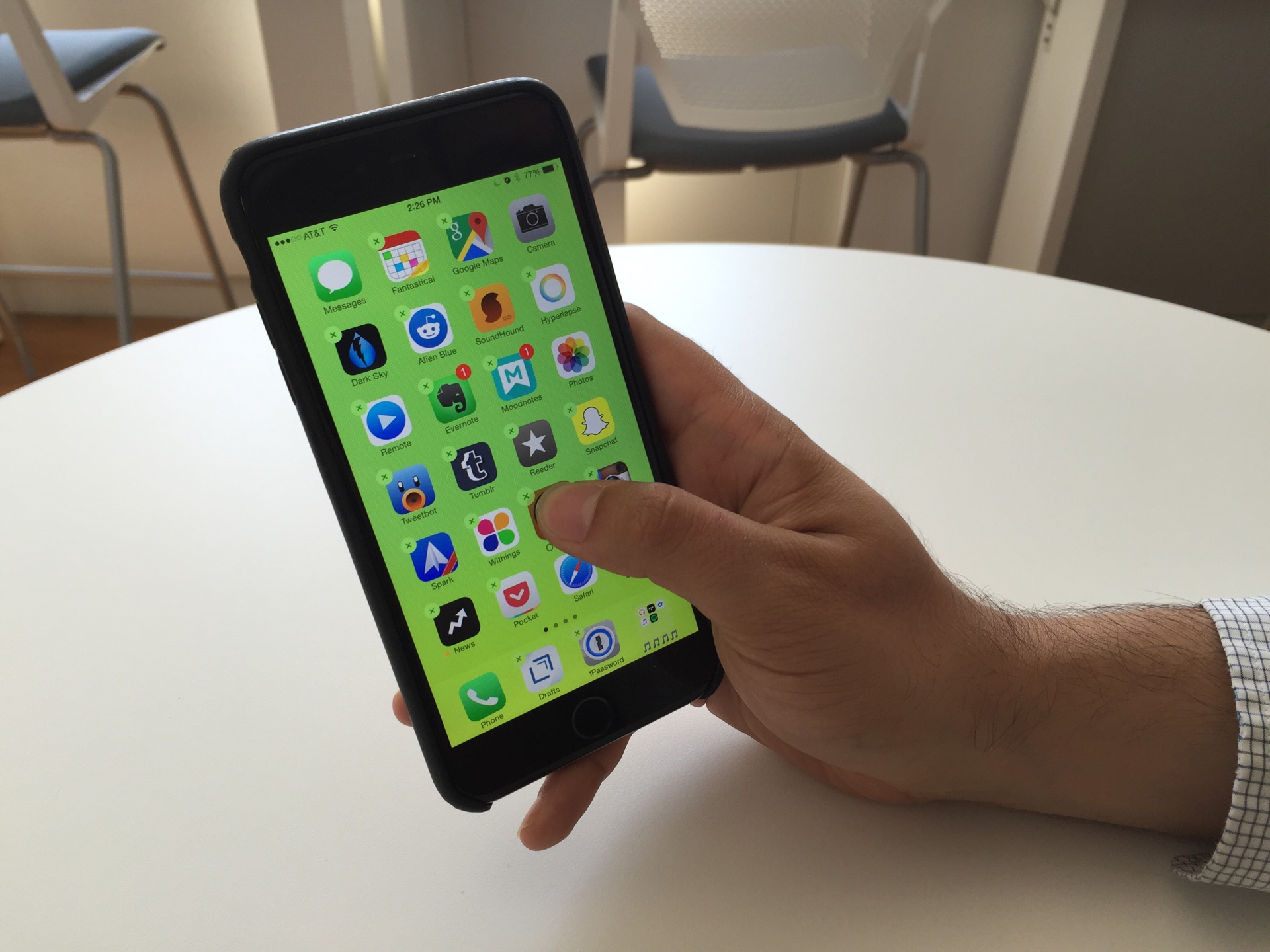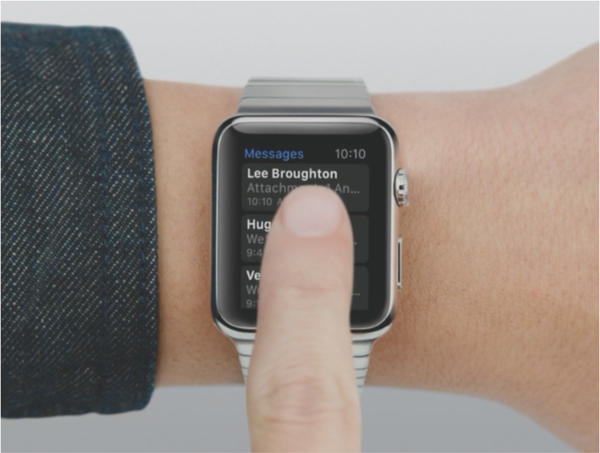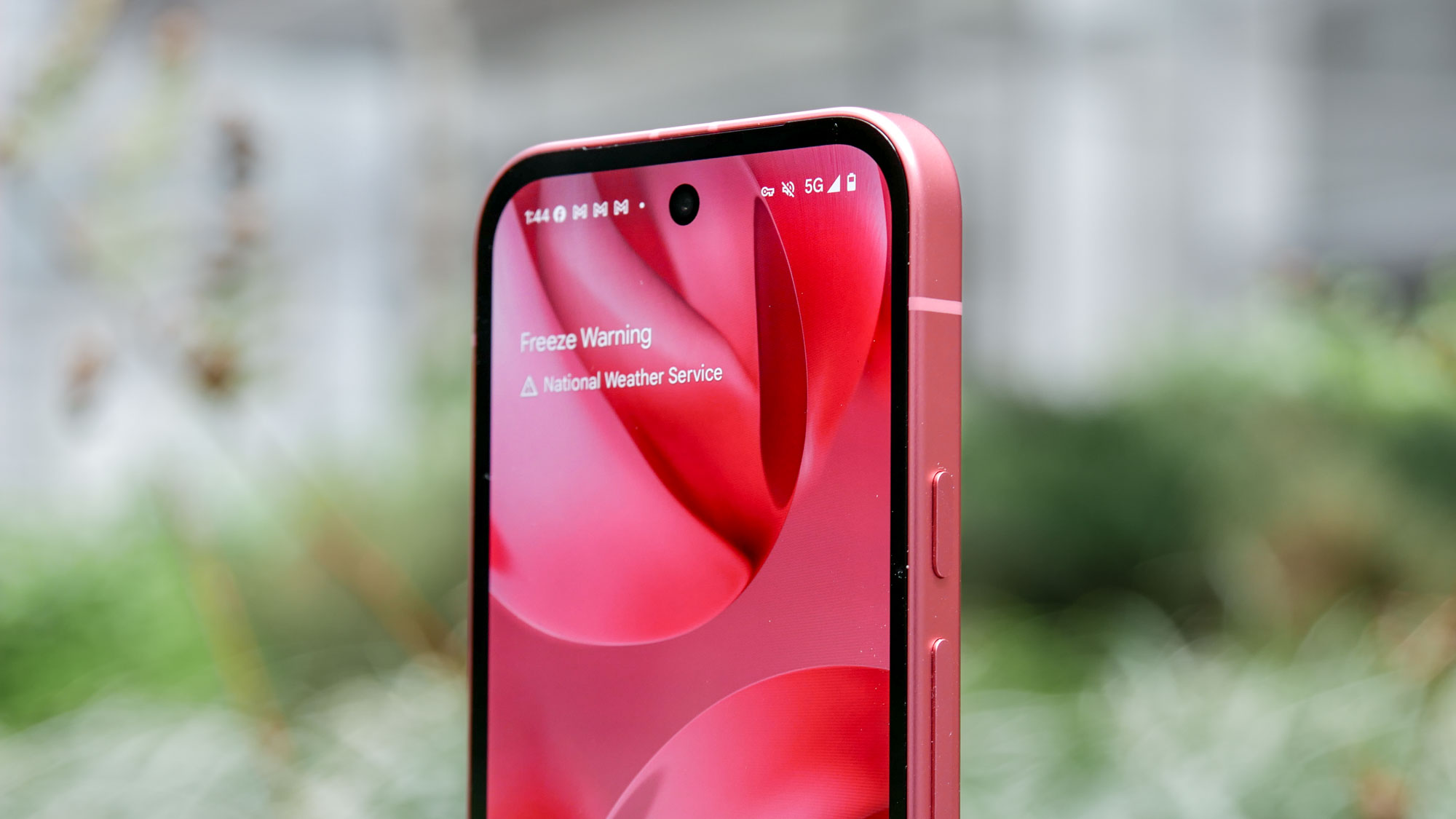How Force Touch Will Change the Way Your iPhone Works
All signs point to Apple adding Force Touch to the next version of its smartphone. Look for the feature to work on the iPhone much in the same way it works on Apple's laptops.

During the Apple Watch's unveiling last fall, we got our first glimpse at a feature Apple was pretty proud of: Force Touch. An Apple Watch user could tap on the watchface as normal, or press harder for a second level of interaction. Then this spring, Apple announced its new MacBook and MacBook Pro laptops with Force Touch trackpads, which allowed laptop users could tap or click as normal, or press harder for additional functions.
Once might be a curiosity, but twice is the start of a trend. It's easy to believe the rumors that this fall's new iPhone will also integrate Force Touch in some way. But what form will it take, and how will it change how iPhone users interact with their devices?
How Force Touch Works on Apple's Other Devices
On the Apple Watch, Force Touch is the equivalent of a right-click — pressing hard on the Apple Watch face brings up a contextual menu that gives you options that weren't visible on the watch's tiny display. For instance, during a workout on the Apple Watch's Fitness app, using a Force Touch on the display brings up three options: End Workout, Pause Workout and Cancel.
MORE: Best Smartphones
Force Touch is a vital part of the Apple Watch interface, because it gives users access to features that they couldn't otherwise reach. Customizing a watch face, for example, requires a Force Touch to bring up the customization panel.

The problem with this is that Force Touch isn't a gesture that most technology users will expect, which puts the onus on Apple to communicate — though its user documentation and in software right on the device itself — that a hard press on the screen can do “magic” things. Once you understand how Force Touch works on the Apple watch, it becomes second nature. But you need to know that it's there, or you'll never learn.
On the latest MacBook and MacBook Pro models, Force Touch is available to app developers to integrate into their apps as they see fit. By default, a force click performs more or less the same function as a three-finger tap does on other Apple trackpads, bringing up tertiary contextual features like displaying the definition of the word underneath the cursor or kicking off Quick Look in the Finder. Developers can add other features and even increase the "depth" of the click, so that increased pressure will result in even more "clicks."
Sign up to get the BEST of Tom's Guide direct to your inbox.
Get instant access to breaking news, the hottest reviews, great deals and helpful tips.
On the Apple Watch, Force Touch is ubiquitous, but on the Mac it's only available on the 13- and 15-inch MacBook Pros and 12-inch MacBook released this year. So Apple and its developers can't really build in features that are only available when you Force Touch. Instead, for laptop users, it's more of a curiosity; It might turn into something interesting, or it might not.
How Force Touch Might Work on the iPhone
Like the Mac — and unlike the Apple Watch — iOS app developers won't be able to assume that an iPhone has Force Touch. While some developers might do the extra work to detect that their app is running on a Force Touch-capable phone and change their interface accordingly, it's far more likely that Force Touch on an iPhone will be used for shortcuts.
The first kind of interactions I'd expect to see will be of the "cut to the chase" variety — namely, you may be able to emphatically touch an icon in order to immediately skip to the most obvious option. As 9to5Mac reported, this could mean jumping straight to navigation when using Force Touch on a point of interest in Maps, or perhaps using Force Touch on a tweet to automatically bring up a reply window. And of course, like on a Mac, perhaps force-touching on a word in Safari will bring up its dictionary definition. Ideally, a grammar would eventually build up in the minds of app users: Certain definitive or obvious actions can be completed by using Force Touch.
MORE: Smartphones with the Longest Battery Life
The second kind of interaction would be more akin to a right-click on a computer. Like the Apple Watch, this sort of touch would bring up a menu of options. Imagine using Force Touch on an image in Photos and being automatically prompted with sharing options.
Touch-based devices don't have the luxury of telling users to click an extra mouse button or hold down a modifier key on the keyboard. Adding pressure-sensitive touches to the iPhone will — forgive the expression — add depth to the iPhone's interface. In particular, iOS games could benefit from allowing players to either tap or use Force Touch on the screen to apply different behaviors, whether that’s using a secondary weapon in a shooter or sending selected units to a particular location in a real-time strategy game.
Until Force Touch is integrated with every iOS device around, though, it's unlikely to do more than add a nice shortcut layer to boost user productivity. Even when Force Touch appears on all modern iOS devices, the lack of discoverability will still prove a challenge. And that's why Force Touch will likely be the iPhone's equivalent of right-click — a nice feature that adds richness to the interface.
Jason Snell was lead editor of Macworld for more than a decade and still contributes a weekly column there. He's currently running the Six Colors blog, which covers all of Apple's doings, and he's the creative force behind The Incomparable, a weekly pop culture podcast and network of related shows.
-
hausjam I don't see the big deal with force touch. It's essentially being treated no different than touch-and-hold. Windows phone has been using touch-and-hold as a kind of "right click" for years now.Reply -
boosted1g ReplyI don't see the big deal with force touch. It's essentially being treated no different than touch-and-hold. Windows phone has been using touch-and-hold as a kind of "right click" for years now.
Completely untrue, the feature does not exist until Apple invents it! -
lml56501 my classmate's mother-in-law makes $78 /hour on the internet . She has been unemployed for seven months but last month her check was $16983 just working on the internet for a few hours. see here now.....Reply
=======>>>>>>>>www.online-jobs9.com
